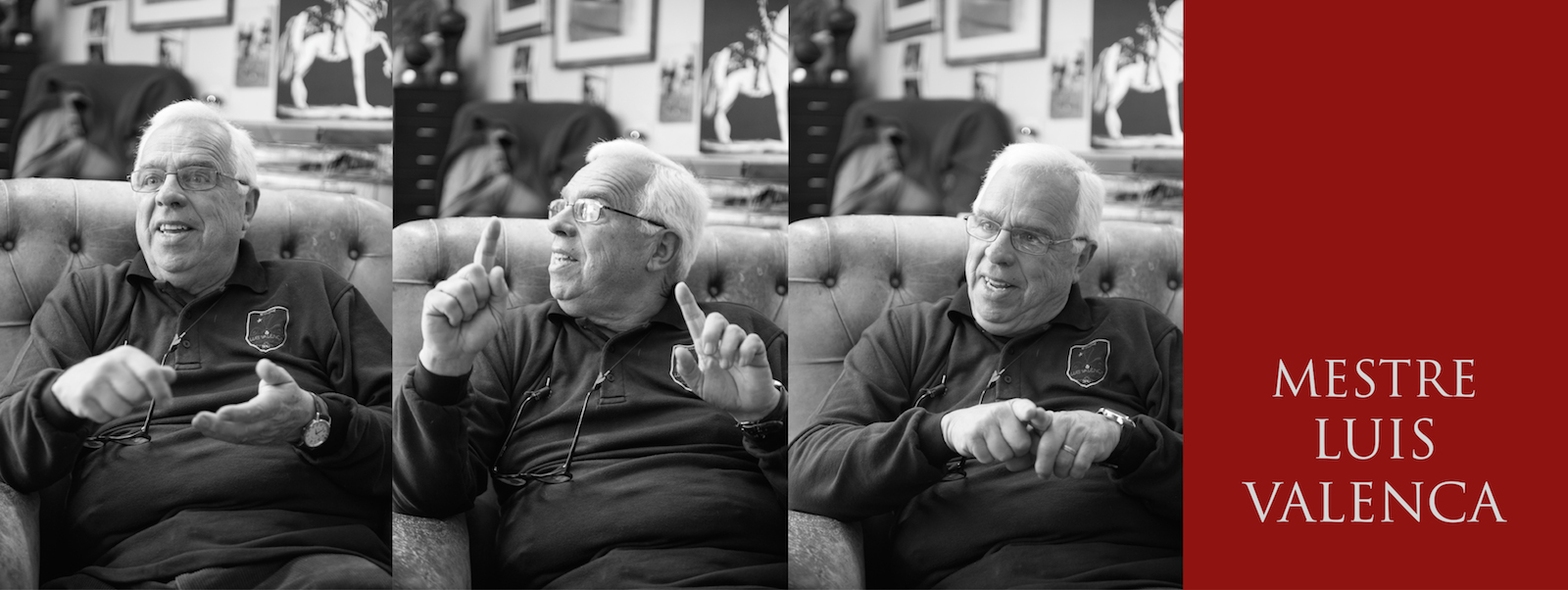Interview With Mestre Luis Valenca
We hosted Equilife Magazine of Norway on one of their Portugal trips one of our days took us to Luis Valenca – this is the wonderful article translated into English
The theatre man, artist, horse trainer, story teller – the man behind Appasionata
“With passion you can do everything. You have to love horses to do this, then the training becomes simple” Luis Valenca
Text Therese Alhaug Photography Lena Saugen
A 30 minutes drive outside Lisboa lives the classical master and artist MESTRO LUIS VALENCA. The man behind the world’s most spectacular horse show: Appasionata, and one out of four trainers having been rewarded the spectacular title “Master of Equestrian Art” .
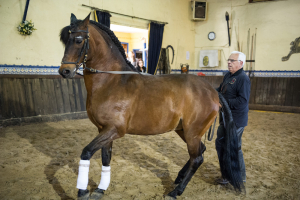
Valenca has been the most important advocates of the Lusitano as a “show horse” in modern time
He has devoted his life to horse shows, theatre life and education of horses and riders.
At home he has built an oasis of his own – a horse paradise, away from the modern world. Here you can find stocks of costumes, a horse museum and a traditional training area, comprising old paintings, mosaic art, gold decorations, i.e. everything belonging to a honourable and classical horse world. EQUILIFE visited Valenca at home in Portugal – a visit that turned out to be a life experience.
Old Times
We arrive at an early Friday morning. The white- and yellow painted riding stables form a long row, and curious horses are looking at us from the doors facing the yard. Flowers of so many colours are climbing the walls, while some of the stallions are welcoming us. To the left we find a huge in-door show arena, with audience facilities and a large, separated show ring.
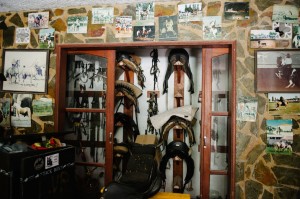
New Stables Built in a Classical Way
The classical centre was built in 1981. At that time there was just a large green expanse of open countryside outside the yard. Today sadly, we have got modern blocks with flats a brand new hospital instead, which tries to steal our attention. – We of course choose Valenca’s world: An nostalgic oasis of flowers, singing birds, beautiful buildings, horses and music. Here the past lives as was it yesterday. But Valenca has become an older man, and his time as an active rider has come to an end. He meets us, having just left his office, walking with a little limp, but smiling broadly and giving us a friendly welcome. He is enthusiastically rises his arms. “Welcome welcome my friends” he smiles. Valenca loves visitors and like to spread his message to younger riders, in the similar way he himself acquired his knowledge from past teachers.

An Old Museum
We are invited to visit the stable`s museum. There was quite a special horse that guided Valenca`s career: The palomino Lusitano stallion Sultao. The palomino Lusitano came to Valenca in 1971. These two man and horse trained together, and after some time they became famous showing their special and artistic skills. But they had to wait until eventually they got a sponsor, who saw the potential of both horse and rider together. That was their turning point. The sponsor wanted to invest in establishing a horse show able to travel through Europe, demonstrating their abilities. This also was the beginning of establishing the world’s most famous horse show:
Appasionata. Sultao was active in this show until the age of 27 years. The horse lived on until the age of 31 years. Afterwards, in respect, this horse got a memorial hall dedicated to him.

Well Known Competition Riders Riding Sultao
Within the museum you can find pictures of Sultao, with well known competition riders sitting on his back, and with well known actors watching. Among the riders are Isabel Werth, Anky V. Grunsven and Nicole Uphoff. All of them riding Sultao.
“Who was the best rider?” I ask. I was really curious
. “I will point at Nicole Uphoff – she had the best feeling and sensitivity”, Valenca whispers low, hoping that no one could listen.
He adds: ”Think and they do – that is the secret with horses”. So he shows me a picture of his daughter. He is proud. “Sultao was a “girls horse”. The palomino horses here in Portugal are seen as “the horses of the girls”, he explains. “My daughter did many of the shows on the back of Sultao. Today, she rides competition dressage”, he tells.The warmblood horse – a fantastic athlete
Talking about animal training, I ask Valenca`s view on todays competition riding, and his opinions about the criticism that from time to time arise against the use of “hard methods” in the sport.
“The sport of horse training is fascinating. At the same time both art and training – really admirably. It is exciting to watch, I myself have almost always been riding Iberian horses. But my daughter, and also grandchildren, ride competitions”, he explains.
He keeps silent for a moment. “Wait a second” he says. So he rises and takes down a picture from the wall.
 Image from Valenca Museum
Image from Valenca Museum
“By the way, you remind me of her” he says, and shows me a photo of his granddaughter. And you reminds me of my grandfather, I think, and keep smiling for myself. He continues: “Yes – the warmblood horse has a lightness and smoothness that fascinates me. To ride a warmblood horse can compared to driving a Formula 1 car, it is really nice to watch”, he assures. ”But it is a demanding horse. As regards your question: After all the problem is not the rider. As this sport has become more and more commercial, we have seen that riders are putting more pressure on the horses in riding and handling. Why?” Valenca gets serious and leans backwards, a little resigned. ”It is not the rider, but the money that is the enemy of the horse. I am quite sure of that. Where you have too much money at stake, man loses his judgment and goes for quick solutions. We are in a hurry, and are working with our heads instead of our hearts. Then things go wrong” Valenca sighs, putting his hand on my shoulder and leaning forward.
“You know, you don’t ride primarily with your assistants but with your heart.
Do you have your heart with you, training is quite simple. All you do is that simple”. He puts his hand on to his heart. “From here, to your body and thoughts”, he declares. I agree.
Photographs on the Walls
The pictures from Valenca`s career as a show rider mark the walls of the office. Now his riding career has come to an end, mostly due to the operation of his hip.“How is it not to be riding any longer?”
“It is difficult, but I work the horses as much as possible standing on the ground, and use much time giving lessons. It is a gift that I can still be with the horses and riders. Valenca puts a hand on his knee ”In a couple of weeks I shall have new operation. So we shall see”.
He keeps silent for a while. So he adds:
“You know – I never had a boring time in my life. I am occupied with my shows – and are planning everything myself – the music, the choreography, the costumes, who is going to ride and everything else. I love it.
I live a life at a theatre!
I am grateful still being able to do all this, and at the same time I am lucky to share my knowledge and enthusiasm with students from all over the world, who are participating in my shows. It is quite obvious – it is together with the horses that time stands still. This is like a meditation to me. If I were to live once more, I would like to do the same things once more. Remember – people have to follow their hearts”, he says seriously, again keeping his hand on to his breast. I agree.
Valenca has several things on his mind, talking continuously. He talks both joking and seriously at the same time. A truly vibrant alive person.
A good friend of Mestre Nuno Oliveira
Horses have been his whole life. During many years he worked together with the late Mestro Nuno do Oliveira – another well known Portuguese rider, who has been portrayed in a previous number of Equilife. Valenca pays homage to his time with his late friend.
“Nuno “saw” horses. He never had money
But saw the potential in horses who were of no interest to other people. I remember his enthusiasm towards buying a horse for my daughter. He saw the potential in the horse. I did not listen to him, but he continued trying to persuade me. At his fourth try, I gave in. The horse earned me so much money, and later the sale of this horse financed my purchase of the whole farm”, Valenca says, waving his arms.
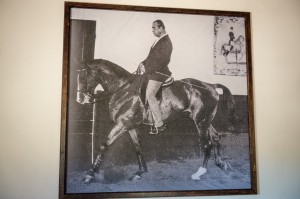
“Pay attention – all you see here is due to Nuno’s knowledge.
Nuno never had the possibility to buy a “good horse” – instead he had to work until succeeding with horses that had been given up by other people. It was this kind of work that gave him great satisfaction.” Valenca keeps silent for a while.
“I still miss him, we could talk for hours on horses and the art of riding. Like me, he also loved music. When he was riding, you could listen to opera tunes all over the village where he lived.” Valenca is laughing. “Listen, do you hear the music?” “Yes” I say.
“It is beautiful, isn’t it?” “Of course” I say. Valenca is laughing, then he get more serious.
“I want to tell you a special story. When Nuno lost a close friend, he rode his best horse, playing his favourite song at the highest possible volume – riding his horse, weeping. This was his way of commemorating his dear friend. He was that living and impulsive person, full of passion.
A great man.”
Are horses able to enjoy music?
You can find clues of Nuno Oliveira in Valenca’s life. He himself is using music training his horses, and also during his shows.
“Music calms your body and goes to the heart of riding – so you can become a better rider. Apart from that, music touches people. Maybe music also in a way touches the horse? What do you believe?
Now, let us take a look at my stock of costumes” he says, leading me into a narrow and long corridor close to his office.
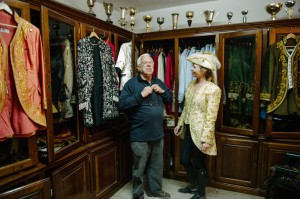
Valenca proudly shows us baroque suits in a huge aray of colours. Hats, coats and shirts are nicely lined up behind glass doors in cupboards, arranged according to colour. He shows me a golden suit. In seconds, I am dressed up, wearing a nice gold and yellow dress and a hat.
”Would you like to take a ride?” he asks. I accept his invitation at once.
Outside a black stallion is waiting for me. Valenca helps me up into the saddle, and tunes the music to highest level.

The powerful stallion is listening, then dancing. “Wonderful!”, he nods, sharing my enthusiasm. I get a short introduction to how things should be done. And at last – a “bow”. “I did it” I shout, happy, but I must admit that the horse himself knew what to do.
Valenca is obviously happy and excited. He pats the horse, following the music with his hands. So he looks at me with a smile: “The horse is a wonderful teacher – it lets you stay in the moment, as the music itself. You have to know it in your heart” he says.
 Appasionata:
Appasionata:
The horse show Appasionata is every year entertaining more than 500.000 people in all Europe. The show is lined up as an adventure combining riding, horse, dancing, music and song – creating afantastic experience – both for horse lovers and other people as well. The setting is created by some of the worlds most prominent costume- and scenic designers, which together with people who take care of sound and light create the frame of an unforgettable experience.

